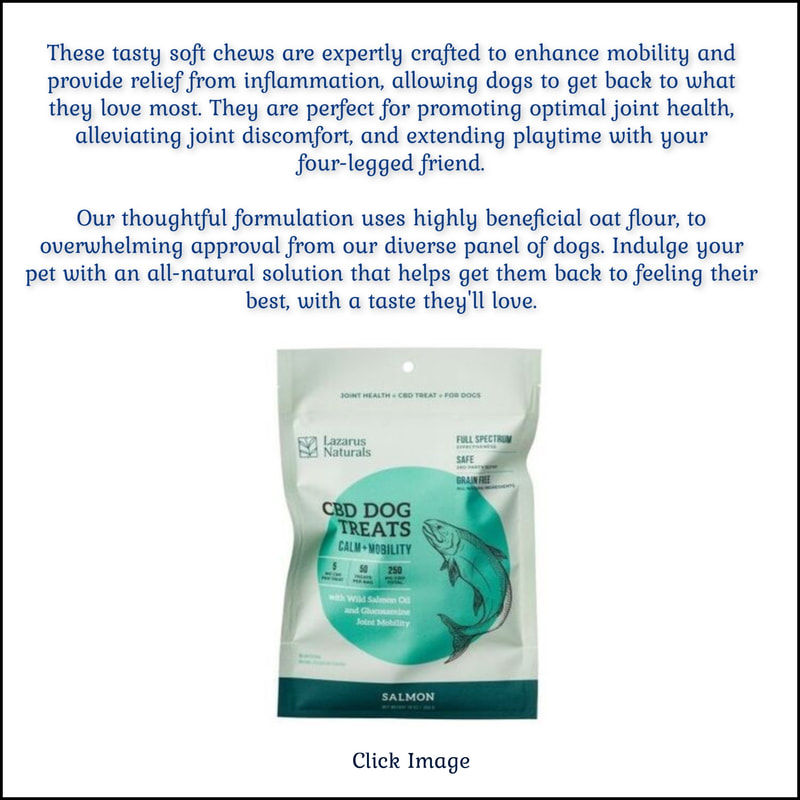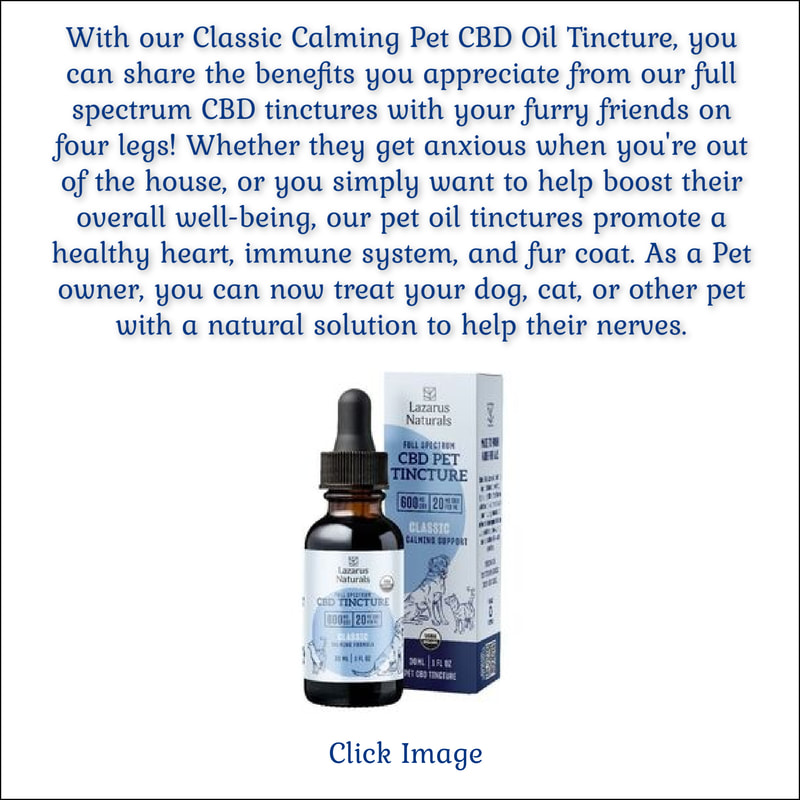|
I have done a lot of research on Canine arthritis and joint disease in search of new things. They pretty much all say the same thing. Most all recommend NSAIDs. NSAIDs are a very high risk and a dangerous drug. Many dogs have died from taking these meds. I am not saying that they are not needed but should only be given short term. No longer than 2 weeks. There is a high possibility not to have to give these for more than a week. The trick is, to change everything you have learned and was told all your life. Vets do not have a clue when it comes to natural remedies. Some will recommend some therapies like hydrotherapy. But ALL will send you home with the NSAIDs. And not many vets recommend Adequan either which I find baffling to me since it IS a medication and they have access to it. This is why we MUST find alternatives to what we are told and have been doing. The body works as a whole. You cannot put a band-aid on a pain and expect things to get better. That's all that these meds do. You have to do so much more. If you want your dog to heal and become pain free or close to it..you must do so much more. There are many steps to heal the body and they must all come together for positive results.
|
|
Here Are The Steps: First make sure you have done blood work and all internal organs checked before determining it is just your dogs joints. Make sure your vet does x-rays to verify diagnosis before proceeding. 1. Change your dog's diet. Get completely off of kibble dog food and make a homemade diet, raw or cooked..doesn't matter. Add in much needed nutrients via supplementation. 2. Purchase a water filter. You can get a pretty good one for as little as $150. Filter out fluoride as well. 3. STOP ALL VACCINES period. You can titer. IF you MUST get rabies, make sure you get the 3 yr Rabies that is Thimerosal Free. ASK for it!!! If your vet doesn't carry it, find one that does. Do not let them take your dog in the back while you wait. Watch them draw it and give it. No tricks! 4. Remove as many chemicals from your home as possible. Buy chemical free washing detergents and fabric softener sheets. Baking soda works well for washing clothes. Use white vinegar in place of bleach. Use Diatomaceous Earth (Food Grade) for cleaning around your house also. Vinegar is great for many cleaning uses such as a mix of rubbing alcohol and vinegar with a little filtered water added. Cleans glass counter tops etc. 5. Do NOT under any circumstances use any flea and tick topicals or shampoos. If you do need them, use all natural products. Safe shampoos here. 6. DO NOT USE any lawn fertilizers or chemicals on your yard nor carpets. Use all natural fertilizer and ant killers that are non toxic. Vinegar mixes work well for both weeds and bugs. Use Diatomaceous Earth (Food Grade) on your entire yard and around perimeter. It has many uses. Make sure it is food grade. If you have a swimming pool and your dogs get in it..which is a great idea, use a mineral type cleaner/chlorine mix. It reduces the amount of chlorine in water. After walking dog, rinse paws off after walk using apple cider vinegar and water. Betadine (povidone iodine) and water works as well. |
|
7. Give herbs and preservative FREE joint supplements. MOST all contain preservatives so I have created a small list of ones I have found that are safer or contain less than the others I ran across.
8. For dogs that need or have been on NSAIDs, Start your dog on a good joint supplement and taper off of the NSAIDs over a week or two. Give the loading dose at all times. Four Caps a day (2 caps twice a day). This has worked very well for dogs in severe cases. Also I really like TRF 150/350 or a cheaper brand Ostinol 15/350/450. It repairs, restores and helps reduce inflammation and pain as well. If your dog is on steroids, get him off of them as quick as you can. They are not helping. Get your dog on Ostinol 350 and/or TRF 150 quickly. 9. Start your dog on Adequan injections immediately. Make sure they do not have kidney disease or diabetes. Speak with your vet. You can get it online cheaper than what the vets sell a vial for but giving it at home is your cheapest route. Have your vet show you how. AND buy the equine version. It's at-least $15 cheaper a vial. The loading dose will be the most costly so buying the equine version is more cost effective. The only difference is, the canine version has a preservative in it and the equine version does not. I have two dogs on it and I buy the equine version. And of course, the bigger the dog, the more you will use from the vial. I can get 3 shots per vial. That's for 70 and 80 lb dogs. The loading dose says twice a week for a month then taper off each month to one injection per month. That is JUST NOT POSSIBLE in my household. First, Diamond with severe Spondylosis took two months with twice a week shots before I seen an improvement. To this day, both dogs get a shot every 2 1/2 - 3 weeks. |
To find out where your dog's point is, is to wait and watch closely. As you extend the time out, if you see limping, or your dog slowing down or just not right, give an injection. If the next day your dog is back to being peppy and feeling good..then that's where your limit is. Find that happy place and stay with it. In winter you may need to watch this as well. So you don't need to go completely by the book on the dosing. Make your dog comfortable but be smart. It beats the alternative. Normally a shot lasts 3 days until it gets built up into the system. That's why you can start to back off on the shots given per week or month. Sydney has hip dysplasia and even though she gets an injection every 2 1/2 - 3 weeks as well, she still has a slight bunny hop. She can walk longer distances too. I give at least 2 caps a day but she does well with 3 caps a day. Some dogs will need to stay on 4 a day. (If your dog doesn't take capsules, you can hide in food or you can open these up and sprinkle into food. They may be a bit bitter but mask it with a dash of garlic or sardines or something your dog likes to mask the smell and taste. The caps, when opened...twist and turn them and tap on plate or bowl. It does kind of get stuck in the caps so you must work it out).
|
10. If your dog has a new injury like an ACL tear, rest is best for at least 2-4 weeks. Put your dog on TRF/Ostinol right away. You can also use CanineActiv along with the TRF/Ostinol. After rest, use PROM exercises slowly and do daily massages. Pay special attention to rubbing up and down the spine as well as it is the lifeline to the limbs. Moist heat and cold therapy works along with this. After a couple of weeks, get your dog in a pool for swim therapy or find a facility that offers water therapy. Can be a pool or underwater treadmill. Laser therapy, Acupuncture, chiropractic all work well too. Use several different means of therapy to get a faster recovery for your dog. Once walking without pain and no limping, do short walks. Say 6 houses down and back (5 minute walk). If they do well and not limping that day or the next day, you can do that walk for a week then slightly increase the walks to a little further. DO NOT overdo these walks. Find a distance that works well for your dog. There should be no limping or pain after the walks. It's not about distance as it is about repetition. Give CanineActiv before or after the walks to help. Invest in a pool. Say an above ground pool just deep enough for your dog to paddle his legs without touching the bottom or one that he can walk in but head is above water. Buy a life vest as well if pool is over dogs head. It helps a lot..it really does. If they get tired and stop swimming, they won't sink. Start the swimming out slow. Say 5-8 minutes of swimming the first time. You can increase that as you go as they progress. Always try to extend your therapy slowly and back off if you see a setback. Don't push it. You will get there. It just may take some time. Continue therapy year round..but you can reduce the amount given. Walk your dog at least 3 times a week. Swim as much as you like. Winter time, use a therapy place for indoor swimming, laser etc. Keep your dog moving. That's the key. 11. If you can afford it and find one in your area, hyperbaric chambers work well for fast healing too. It provides more oxygen in the body therefore supplying the limbs with more circulation and faster healing. It also works well on cancer. |
|
12. If your dog has Osteoarthritis or tendon injury that won't seem to recover, look into Stem cell therapy. It does cost but your dog will not need any meds and can function as a normal dog would for a year or two before needing another injection if it works for your dog. You must bank the fat cells though and you pay for them to be stored. Also your dog will require surgery like a spay to remove the fat cells. It is somewhat costly but it is completely natural and nothing foreign is going into the body. I tried it on Diamond even though results were unknown for her spondylosis. It was a 50-50 chance. It worked for 4 months. A year later though we did another injection and it lasted 6 months. This was good results for her having spondylosis and no research done on it. But it does work well on Osteoarthritis. Hip Dysplasia is a 50-50 shot as well. They haven't progressed far enough into helping all dogs at this time but they are striving to help in the future. There is also PRP to look into although I have no experience with it. Others that have tried it have seen good results. It's less costly and no surgery needed. A great alternative for tissue repair is a supplement called TRF 150. To read more in detail about TRF or Ostinol and its ingredients and what it can do, click here.
Just know, if you try one thing for awhile (4 weeks) and it doesn't seem to help, try something else or change what you are doing. It may be that the dosing for EVERY dog is different and every dog will need different things. What's important is to keep chemicals and toxins of all kinds out of the body. Keep the body moving. Find the correct combination of supplements and physical therapy that keeps your dog moving. And provide a good healthy balanced diet without the junk in it. ALL commercial pet foods are toxic. They really are. That is a whole other story to discuss. If you are not sure and want more understanding of pet foods, click here. Don't forget a good orthopedic dog bed. Memory foam lasts a lot longer than the regular foam mattresses. But find a good thick one he/she can walk onto without jumping on and can lay on it without it pressing all the way to the floor. You want support. |
|
If you will do all of these things, You will find your dog walking pain free within approximately 6 weeks. Then you continue to build them up and get them really going and back to normal. Yes it is possible. You just must work at rehabilitating your dog and yes it takes work on your part. In the long run, the cost is less than any surgery any vet wants you to jump into right away. Trust me. I have heard vets say your dog needs surgery NOW or else. When in fact, that dog didn't. After 6-8 weeks of changes and rehabbing..the dog was walking normal and pain free after following everything I recommended above.
Also another person had her dog on NSAIDs for 2 years and the dog was still barely moving. OMG, I bet that dogs organs were starting to give way. I got her to get her dog off of them after starting CanineActiv, Actiflex and Adequan. The dog now is walking really well and pain free. ACL tears take at least 6 months to heal so be patient and work hard during this time to rehabilitate your dog. It can take up to a year for recovery in ACL tears. Make sure you protect the other leg as well because the possibility of another tear in the opposite leg is 50%. Braces work well also. Never give up hope until you have tried all alternatives before ever considering surgery or euthanasia. Many things can be done and each dog is different. So please if you are still having trouble and have done all the above, get in touch with me. Your case would be considered unique with other options to try. Canine Arthritis And Joint © |
|
|
**Canine Arthritis And Joint is intended for informational, educational and entertainment purposes only and is not a substitute for medical advice, diagnosis or treatment. Do not attempt to self-diagnose or treat any health condition. You should always consult with a healthcare professional before starting any diet, exercise or supplementation program, before taking any medication, or if you have or suspect your pet might have a health problem. The opinions expressed by Canine Arthritis And Joint are not to be replaced for medical care. This website and the information contained herein have not been evaluated by the Food and Drug Administration. The information and opinions on Canine Arthritis And Joint are not intended and cannot be used to diagnose, treat, cure, or prevent any disease. This applies to people and pets!
This site uses affiliate links such as banners you may see that allows for paid commissions.
This site uses affiliate links such as banners you may see that allows for paid commissions.
Canine Arthritis And Joint © Copyright 2015-2024
Designed By Paw Prints Web Design
Designed By Paw Prints Web Design












